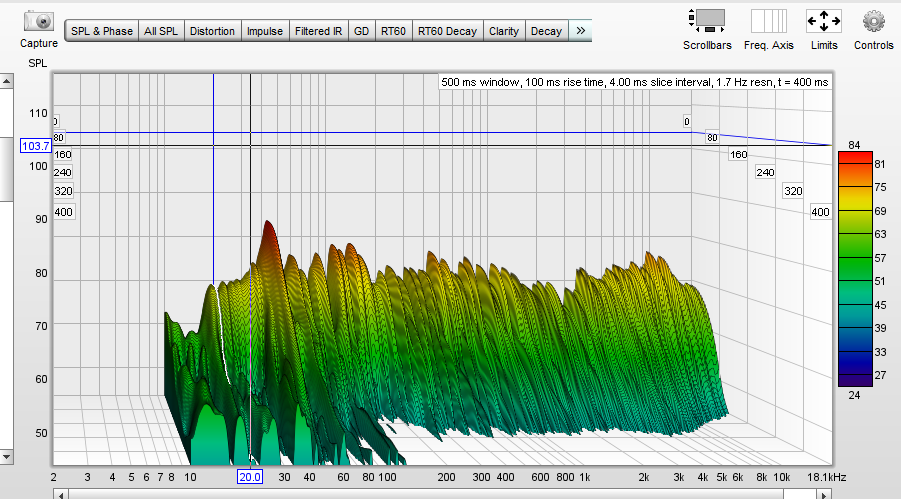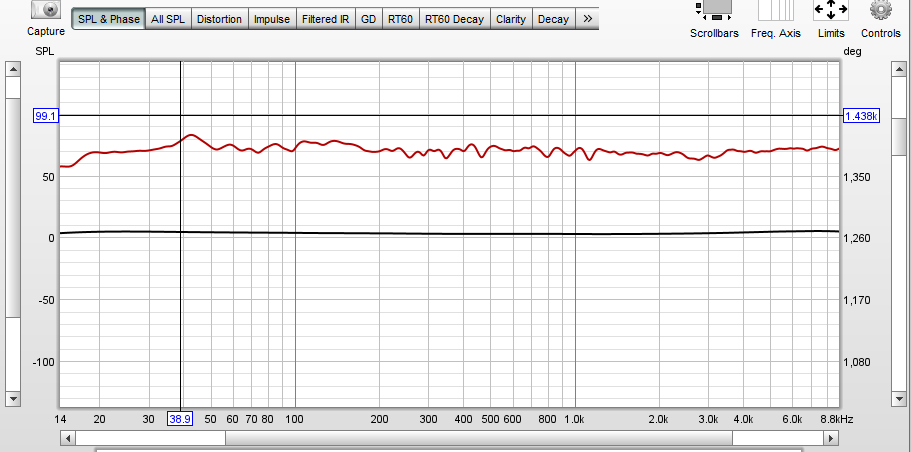@bobpyle, not all Bob. I referenced baclagg's frequency response curve. I know what my preferences are relative to a flat response curve because I have the capability of making my system perfectly flat or whatever I want it to be. My ears are not the reference but I know what ear likes to hear and the rest of me wants feel. I can replicate what I want to hear without ever listening to music just by measuring frequency sweeps an making adjustments according to what I hear but what I see.
Shouldn't This Sound Boomy?
I have recently purchased a mic and I’m running REW to test my room response. These are the resulting charts:


I hear nice tight bass when I play music. I hear a big improvement over my previous speakers. The mid range and treble sound great and again the bass sounds articulate and tight. I would think this would be boomy and muddled. Unfortunately, I did not have the ability to test my previous speakers. The room is treated with GIK panels, but I have no bass traps in the corners due to the spouse approval factor. Am I a horrible listener that can’t hear this, or am I missing something else?
- ...
- 43 posts total
The dip around 2.4kHz is a common feature among several speakers and a known tweak. It gives an enhanced sense of imaging. You can find it in several previous generation Wilsons, among others. It is also a good crossover point between the tweeter and midrange, so it's relatively easy to make this dip happen in the crossover by spreading out the filter points a little more than you would use for a completely neutral speaker. I doubt that’s from the room. Personally I’m with Floyd Toole that EQ should be used sparingly and mostly in the bass, otherwise what is the point of picking out speakers you like the sound of? |
@erik_squires I will be holding off trying to EQ to improve. I am going to try a few things with room treatment as soon as I can find some time. But, for now, I’m just going to enjoy the music!
Thank you everyone for your input!
|
- 43 posts total

